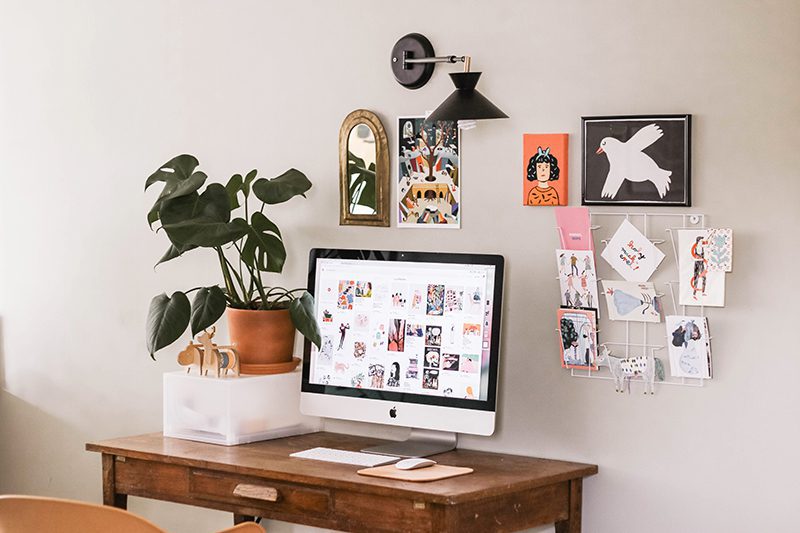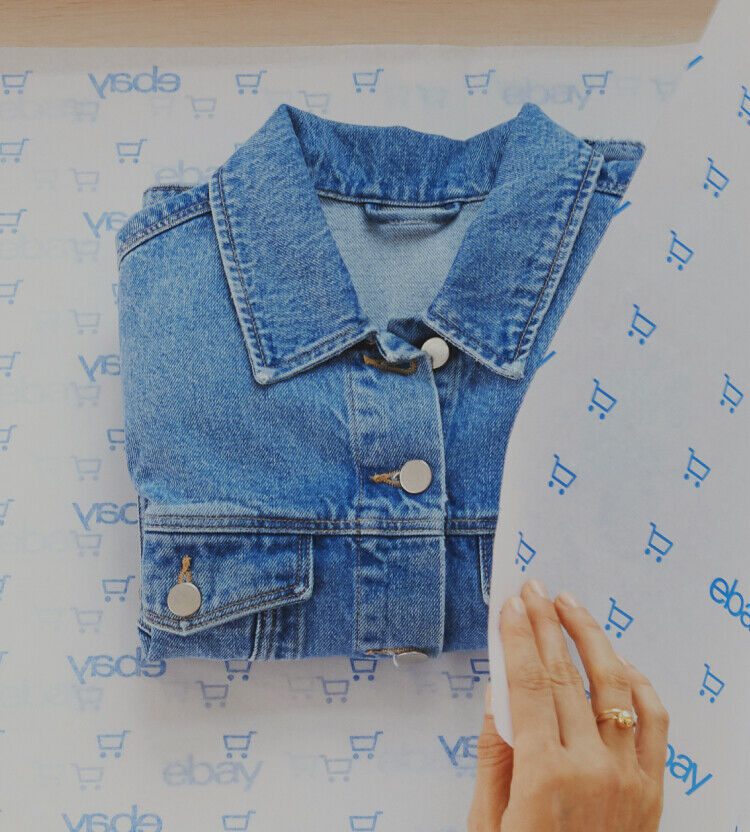Art business is a great way to make money from your passion. There are a few things you need to do to get started. First, you need to find your niche.
What type of art do you want to sell? Once you know what type of art you want to sell, you need to find your target market. Who will be interested in buying your art?
After you’ve found your target market, you need to create a marketing plan. How will you reach your target market and let them know about your art business? Finally, once you have all of this figured out, it’s time to start selling!
You can sell online through platforms like Etsy or through brick-and-mortar stores. Whichever route you choose, make sure that you’re pricing your artwork correctly and providing excellent customer service.
- Decide what type of art business you want to start
- There are many options, such as an online store, brick and mortar gallery, or mobile art studio
- Choose a focus for your business
- What type of art do you want to sell? Consider your target market and what they would be interested in buying
- Create a business plan
- This will help you map out the details of your business, including your financial goals and marketing strategy
- Get the necessary licenses and permits for your business
- requirements vary depending on the type of business and location, so be sure to check with your local government offices
- Find a good location for your business
- If you’re starting an online store, this step is not necessary
- But if you’re opening a physical gallery, it’s important to choose a high-traffic area with good foot traffic flow
- 6 Start promoting your art business
- Spread the word about your new venture through social media, advertising ,and other marketing channels
How to Start an Art Business from Home
Starting an art business from home can be a great way to make some extra money, or even turn it into a full-time job. But how do you get started? Here are a few tips:
1. Decide what type of art you want to sell. This can be anything from paintings and drawings, to sculptures and jewelry. There are endless possibilities!
2. Create a portfolio of your work. This will let potential customers see what you’re capable of, and help them decide if they want to buy from you.
3. Choose a pricing strategy that works for you.
You’ll need to find a balance between making enough money to cover your costs, and selling your artwork at a price that people are willing to pay.
4. Promote your business! Get the word out there about your new venture by setting up a website, handing out flyers, or exhibiting at local events.
How to Start Art Business on Instagram
Are you an artist looking to start selling your work? If so, you may be wondering how to go about setting up an art business on Instagram. Here are some tips to help you get started:
1. Create a professional account. When creating your account, be sure to use a professional-looking profile photo and bio that clearly states what your business is all about. This will help potential customers take you seriously and find your account more easily when searching for artists online.
2. Share high-quality photos of your work. When sharing photos of your artwork on Instagram, make sure they are clear and well-lit so potential customers can really see what they’re considering purchasing. You might also want to share process shots or behind-the-scenes photos to give people a glimpse into your creative process.
3. Use hashtags wisely. Hashtags can be a great way to reach new audiences on Instagram, but be sure to use them sparingly and strategically – too many hashtags can look spammy and turn people off from following you altogether. Try using specific hashtags related to the type of art you make, as well as general ones like #artforsale or #artistsofinstagram .
4. Engage with other users regularly. In addition to sharing great content, one of the best ways to grow your audience on Instagram is by engaging with other users regularly – like & comment on their photos, follow accounts that interest you, etc..
Art Business Description Sample
As an art business, we are always looking for new and innovative ways to market our products and services. A great way to do this is through a blog post that provides detailed information about our business. In this post, we will provide a brief description of our company, what we do, and how we can help you with your art needs.
We hope that by reading this post, you will have a better understanding of who we are and what we can offer you. Thank you for taking the time to learn more about us!
Art Business Startup Checklist
When starting an art business, there are many things to keep in mind in order to be successful. Here is a checklist of everything you need to do in order to get your business off the ground:
1. First and foremost, you need to have a great product.
This seems obvious, but it’s worth reiterating because it’s the most important factor in a successful business. Your product needs to be something that people want or need and that they can’t find anywhere else.
2. Next, you need to create a brand for your business.
This includes coming up with a name, logo, and identity that will make your business recognizable and memorable. Your brand should be unique and reflect the personality of your company.
3. Once you have a product and brand, you need to start marketing your business.
Marketing is how you’ll let potential customers know about your product or service and persuade them to buy from you instead of your competition. There are many different marketing channels available (online and offline), so choose the ones that makes sense for your particular product or service.
4. Another important aspect of any business is sales.
You need to figure out how you’re going to sell your product or service – will you do it yourself or hire someone? Will you sell online or offline? What price point will you sell at?
Answering these questions will help you develop a sales strategy for your business.
5 . Finally, once everything is up and running, don’t forget about customer service!
Providing excellent customer service is essential for keeping customers happy and loyal – which leads to repeat business (and more profits).
Successful Art Businesses
Art businesses are a dime a dozen. But which ones are successful? This blog post will take a look at some of the most successful art businesses around and what makes them tick.
First up is the world-renowned Sotheby’s auction house. Sotheby’s has been in business since 1744 and is now one of the largest auctioneers of fine art in the world. What makes Sotheby’s so successful?
A big part of it is their focus on customer service. They offer free valuations of artworks, as well as advice on how to buy and sell artworks. They also have a huge database of past sales that buyers can use to research prices.
Another successful art business is Christie’s, another large auction house that was founded in 1766. Like Sotheby’s, Christie’s focuses on providing excellent customer service. They also have an extensive database of past sales, which buyers can use to get an idea of fair market value for an artwork before bidding on it.
One more example of a successful art business is Paddle8, an online marketplace for buying and selling fine art and collectibles. Paddle8 was founded in 2011 and has since become one of the leading platforms in the industry. What sets Paddle8 apart from other online marketplaces is their commitment to vetting all sellers to ensure that only high-quality items are being listed for sale.
They also offer buyer protection against fraud or damaged items, which gives buyers peace of mind when making purchases on the site.
How to Start a Wall Art Business
If you’re an artist, starting a wall art business may be the perfect way to monetize your talent. Whether you create original paintings, murals, or digital prints, there’s a market for your work. And with a little planning and effort, you can turn your passion into a profitable endeavor.
Here are some tips to get started:
1. Define your niche. What kind of wall art do you create?
What styles do you specialize in? Narrowing your focus will help you target potential customers and market your business more effectively.
2. Create a portfolio.
Put together a collection of your best work to show potential clients what you can do. Include images of both completed projects and works in progress. If possible, showcase before-and-after shots to demonstrate the transformation your artwork can make in a space.
3..
Art Business Plan
As an artist, it is essential to have a business plan. This document will outline your goals, strategies, and how you plan on running your art business. It is important to be realistic and honest with yourself when creating this plan- remember that your goal is to make a profit!
Here are some tips on what should be included in your art business plan:
Mission Statement: What is the purpose of your art business? What do you hope to achieve?
market analysis: Who is your target market? What are their needs and wants? How much are they willing to spend on art?
Competition: Who are your competitors and what sets you apart from them?
Pricing Strategy: How will you price your artwork? Will you offer discounts or sales?
Sales and Distribution: How will you sell your artwork (online, in person, through galleries)? How will you get it into the hands of buyers? shipping and delivery logistics.
Consider copyright issues here as well. If selling online – where will you host your website/storefront? Are there any fees associated with this platform?
how will customers find out about your site/storefront – search engine optimization (SEO), word of mouth, advertising, etc.? If selling in person – where will these transactions take place (studio, craft fairs, festivals)? Are there any costs associated with participating in these events (booth fees, insurance)? If selling through galleries – research which ones represent artists similar to yourself. There can be several tiers of galleries, so don’t get discouraged if the first few say no – keep trying! Each gallery has different requirements (exclusivity vs non-exclusive representation) so make sure you understand what they are asking for before signing anything. Fees can vary greatly here as well – from taking a flat percentage of each sale to charging monthly/yearly dues. Know what YOU want before approaching a gallery so that they cannot take advantage of you. And finally – always get everything in writing!
Art Business Examples
When it comes to running an art business, there are a lot of different ways to go about it. There is no one-size-fits-all solution, and what works for one artist may not work for another. However, there are some general things that all successful art businesses have in common.
In this blog post, we’ll take a look at a few examples of successful art businesses and explore what makes them tick.
One of the most important aspects of any business is having a clear niche. When it comes to art, this can be anything from landscapes to portraits to abstract pieces.
It’s important to find your niche and stick to it, as this will make you more attractive to potential customers who know what they’re looking for. Once you’ve found your niche, start marketing yourself as an expert in that area. This can be done through social media, word-of-mouth marketing, or even just by having a strong online presence.
Another key element of any successful business is customer service. This is especially true in the world of art, where customers can be very particular about what they want. It’s important to always be available to answer questions and help your clients choose the right piece of artwork for their needs.
Remember that your clients are ultimately entrusting you with their hard-earned money – so always go the extra mile to ensure they’re happy with their purchase!
Finally, remember that running an art business is not without its challenges. There will be ups and downs along the way, but as long as you stay focused on your goals and continue working hard, you’ll eventually find success.

Credit: www.youtube.com
How Can a Beginner Sell Art?
There are a few things you need to do in order to sell art as a beginner. The first step is creating a portfolio of your work. This will show potential buyers what kind of artwork you make and give them an idea of your style.
You can create an online portfolio or print one out to take with you when meeting with clients.
Next, you need to decide on a price for your artwork. This can be tricky, but it’s important to find a balance between what the piece is worth to you and what the market will bear.
Research similar artists and see how much they charge for their work to get an idea of what people are willing to pay. Once you have a price in mind, be firm when negotiating with buyers – don’t let them lowball you!
Lastly, promote your work!
Get involved in the local art scene, attend fairs and exhibitions, and network with other artists and gallery owners. The more people who see your work, the better chance you have of selling it.
How Do Beginner Artists Make Money?
When it comes to making money as a beginner artist, there are a few different avenues you can explore. One option is to sell your art directly to buyers, whether in person or online. This can be done through art fairs, galleries, or even setting up your own website.
Another way to make money is through licensing your artwork, which allows businesses to use your designs on products like T-shirts, mugs, and more. You can also work as a freelance artist for hire, taking on commissions from individuals or companies. Finally, teaching art classes is another great way to earn an income from your passion!
How Do I Start Selling Art from Home?
Selling art from home can be a great way to make some extra money, but it takes more than just putting up a few paintings and hoping for the best. Here are a few tips to help you get started:
1. Promote, promote, promote!
The more people who know about your artwork, the better your chances of making a sale. Use social media, word-of-mouth and any other channels you can think of to get the word out there.
2. Make it easy for people to buy from you.
Have clear pricing information on your website or blog, and make sure payments are quick and easy to process. Paypal is usually a good option for this.
3. Offer something unique.
There are literally millions of pieces of art out there, so what makes yours special? Why should someone buy from you instead of anyone else? Figure out what sets your work apart and use that to market your business.
Do Art Businesses Make Money?
There are a number of different ways that art businesses can make money. One way is through the sale of artwork itself. Many businesses will either sell their own artwork or act as a middleman between artists and buyers.
Another way that art businesses make money is through the sale of arts and crafts supplies. This can include everything from paints and brushes to pottery wheels and kilns. Some businesses may also offer classes or workshops, which can be another source of revenue.
In general, there are a number of different ways that art businesses can make money, and it really depends on the specific business model as to which method or methods are used.
STARTING MY ART BUSINESS + HOW YOU CAN TOO! | Making Art, Prints, Products, Marketing & More!
Conclusion
If you want to start an art business, there are a few things you need to do. First, you need to find your niche. What kind of art do you want to sell?
Once you know what kind of art you want to sell, you need to create a portfolio. This will show potential customers what kind of art you create and help them decide if they want to buy from you. Next, you need to create a marketing plan.
This will help you get the word out about your business and attract customers. Finally, you need to set up a website or online store where people can purchase your artwork. By following these steps, you can start an art business and begin selling your artwork online or in person.



